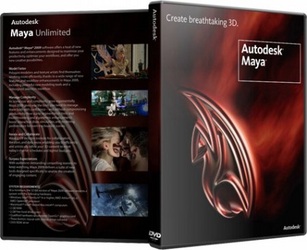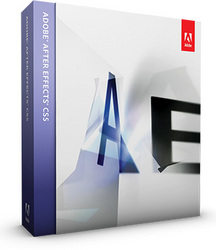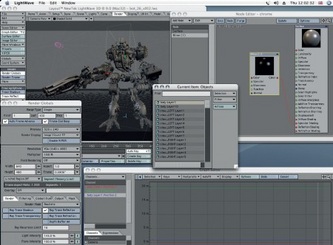By Sheryl Chen
Overview
The term 'Fan' describes the individual who is 'obessed with a particular star, celebrity, film, TV programme, band; somebody who can produce reams of information on their object of fandom, and can quote their favoured lines or lyrics, chapter and verse.' (Hills, 2002)
Media Scholar Henry Jenkins distinguishes between media followers and fans by the following statement
'fan claims a social identity which the follower does not'. (Jenkins, 1992)
To study the Fan Culture is to study this emerging Social Identity within the Third Wave-The New Media. Socialogists Horkheimer and Adorno had described Second Wave as the platform for mass media productions, and they perceived ‘mass audience as cultural dupes to a system that claimed to be responding to the needs and wishes of a public but was really engaged in the process of creating and reinforcing its own ideas of what they public needed to be.’ (Hills, 2002)
Filmmaking was and still is the culture production under such mass culture system. These productions, in Adorno and Horkheimer’s opinion, are works with no 'imagination, reflection, or independent thought of individuality.' (Hills, 2002)
Fan Culture within the New media
New media deconstructs the notion of the ‘mass’. The concept of the mass implies that there is something 'unifying' and 'unitary' about how people act (Marshall, 2004). It has an implicit negative critique of any individuality existed in the unified group of the 'mass'.
The term 'New' defines the individuality that existed outside of this mass category, and that these thoughts and products were seen as a rejection to the mass culture. One prominent type of this 'New' culture, Fan Culture in the digital era will be the key focus of this case study.
To understand this shift in Fan Culture, it is necessary to revisit the notion of New Media. The term New Media poses an alternative approach to the delivery of traditional media platforms (i.e. these platforms are seen defined as Television, Newspaper and Radio), it is the World Wide Web. It has the ability to connect users with its viewers. It encourages a form of interactivtiy between the user of the media and the media itself. This relationship is 'transformative', and this level of transformative relationship differentiates the active audience from the traditional media and the interactive audience from the New Media.
Active: engaged fan audience, audience ‘work’ on media texts. (answering questions from the television program, making phone calls to the radio show)
Interactive: transcends activity, fosters cultural shift in identity and subjectivity. (audience interfering with the content producer, or audience becoming the actual content through their participation)
(Marshall, 2004)
Fan Culture is a derived culture from the artefacts of the mass media. Yet with the the success of the World Wide Web, a new Culture Identity had emerged. It is no longer a representation of the mass media, but rather, an unique identity in a new platform that defines the New Media. With internet acting as the main platform, it has provided the fans with the capability of manipulating, producing and sharing of media forms around the world. The Cuture products of Fandom began to influence the mainstream mass culture by blurring the lines of producers and consumers.
Fan Films are one of the major culture productions that came to view during this era. With cheap productions equipments and computer softwares tailored especially for these enthusiastic fans, large quantitis of digital fan films were created, and broadcasted through sociel networking sites such as Youtube. Hence, the term Digital Media emerges.
‘Digital filmmaking alters many of the conditions that led to the marginalization of previous amateur filmmaking efforts-the web provides an exhibition outlet moving amateur filmmaking from private into public space.’ (National Metro, 2005 )
‘Fan digital film is to cinema what the punk DYI culture was to music. There, grassroots experimentation generated new
sounds, new artists, new techniques, and new relations to consumers which have been pulled more into mainstream practice. Here, fan filmmakers are starting to make their way into the mainstream industry.’ (Jenkins, 1992, cited Hills, 2002)
What used to be the consumer of the mass media had taken on the role of producers. Fans began to create their own contents to satisfy their own needs. There is no clear definition of producer and consumer in the context of film productions, instead, ‘everyone is considered as participants-although participants may have different degrees of status and influence.’ (Jenkins, 1992, cited Hills, 2002)
‘Fans refuses to simply accept what they are given, but rather insists on the right to become full participants.’ The
visibility of these fan movements had been magnified with the Internet and social websites.' (Jenkins, 2006)
My case study focus mainly on one fan production Start Wars: Revelations. I seek to explore the growing concern on how media practioners (prosumers in this case) can improve the film making industry using the available prosumer production, communication and distribution methods.
Media Scholar Henry Jenkins distinguishes between media followers and fans by the following statement
'fan claims a social identity which the follower does not'. (Jenkins, 1992)
To study the Fan Culture is to study this emerging Social Identity within the Third Wave-The New Media. Socialogists Horkheimer and Adorno had described Second Wave as the platform for mass media productions, and they perceived ‘mass audience as cultural dupes to a system that claimed to be responding to the needs and wishes of a public but was really engaged in the process of creating and reinforcing its own ideas of what they public needed to be.’ (Hills, 2002)
Filmmaking was and still is the culture production under such mass culture system. These productions, in Adorno and Horkheimer’s opinion, are works with no 'imagination, reflection, or independent thought of individuality.' (Hills, 2002)
Fan Culture within the New media
New media deconstructs the notion of the ‘mass’. The concept of the mass implies that there is something 'unifying' and 'unitary' about how people act (Marshall, 2004). It has an implicit negative critique of any individuality existed in the unified group of the 'mass'.
The term 'New' defines the individuality that existed outside of this mass category, and that these thoughts and products were seen as a rejection to the mass culture. One prominent type of this 'New' culture, Fan Culture in the digital era will be the key focus of this case study.
To understand this shift in Fan Culture, it is necessary to revisit the notion of New Media. The term New Media poses an alternative approach to the delivery of traditional media platforms (i.e. these platforms are seen defined as Television, Newspaper and Radio), it is the World Wide Web. It has the ability to connect users with its viewers. It encourages a form of interactivtiy between the user of the media and the media itself. This relationship is 'transformative', and this level of transformative relationship differentiates the active audience from the traditional media and the interactive audience from the New Media.
Active: engaged fan audience, audience ‘work’ on media texts. (answering questions from the television program, making phone calls to the radio show)
Interactive: transcends activity, fosters cultural shift in identity and subjectivity. (audience interfering with the content producer, or audience becoming the actual content through their participation)
(Marshall, 2004)
Fan Culture is a derived culture from the artefacts of the mass media. Yet with the the success of the World Wide Web, a new Culture Identity had emerged. It is no longer a representation of the mass media, but rather, an unique identity in a new platform that defines the New Media. With internet acting as the main platform, it has provided the fans with the capability of manipulating, producing and sharing of media forms around the world. The Cuture products of Fandom began to influence the mainstream mass culture by blurring the lines of producers and consumers.
Fan Films are one of the major culture productions that came to view during this era. With cheap productions equipments and computer softwares tailored especially for these enthusiastic fans, large quantitis of digital fan films were created, and broadcasted through sociel networking sites such as Youtube. Hence, the term Digital Media emerges.
‘Digital filmmaking alters many of the conditions that led to the marginalization of previous amateur filmmaking efforts-the web provides an exhibition outlet moving amateur filmmaking from private into public space.’ (National Metro, 2005 )
‘Fan digital film is to cinema what the punk DYI culture was to music. There, grassroots experimentation generated new
sounds, new artists, new techniques, and new relations to consumers which have been pulled more into mainstream practice. Here, fan filmmakers are starting to make their way into the mainstream industry.’ (Jenkins, 1992, cited Hills, 2002)
What used to be the consumer of the mass media had taken on the role of producers. Fans began to create their own contents to satisfy their own needs. There is no clear definition of producer and consumer in the context of film productions, instead, ‘everyone is considered as participants-although participants may have different degrees of status and influence.’ (Jenkins, 1992, cited Hills, 2002)
‘Fans refuses to simply accept what they are given, but rather insists on the right to become full participants.’ The
visibility of these fan movements had been magnified with the Internet and social websites.' (Jenkins, 2006)
My case study focus mainly on one fan production Start Wars: Revelations. I seek to explore the growing concern on how media practioners (prosumers in this case) can improve the film making industry using the available prosumer production, communication and distribution methods.
Star Wars: Revelations
A film made by the Fans & For the Fans

Produced in 2005, the film takes place between Revenge of the Sith and A New Hope. It was produced and directored by a Fine Art graduate from Texas State University, his name is Shane Felux.
'it's been a childhood dream' (Adobe Creative Star, 2005) for Felux to create a film production like Star Wars: Revelations. 'Without the money, without uncle George', Felux wanted to produce something that could still be considered as a piece of 'professional' work, but this time, it is not MADE by the professionals.
Production Tools

'Five years ago, we could never have made this film.' (CBC News, 2006)
The film's production began by the purchase of a Canon XLIS Camcorder
on eBay for $US4500.
'Lucas film supports the genre of fan films, just as long as you obey the rules'. (Attack of the show, 2005)
Since Luca's film allows modification and remixing, Star Wars Fan Shane Felux took this opportunity to show his creativity in filmmaking by producing his own style of Star Wars. With the availability of cheap equipments, Felux was able to produce Revelation at his own budget of $US20,000.
'I couldn’t afford to pay actors, so I auditioned my friends. We built sets and brought in a stormtrooper reenactment
club as extras. All that was missing was Uncle George Lucas.' (CBC NEWS, 2006)
Felux had stated in an interview that the film's cast and crew members were mainly from the Upper East Coast, close to where he lives. The post-production team (special effects and computer graphics) came from all over the world, these include countries such as Sweden, UK, Canada and Australia. These people ranged from amateurs to special effects companies and to talented teenagers. They were all contributing towards to different segments of the film for FREE.
Amongst these global film participants, one free-lance Computer Graphics (CG) designer Adam Benton revealed a series of Computer Softwares that he had used to produce the 10 segments of footage for the film. These include:
Lightwaves (RRP $299.95 for Windows, $399.95 for Mac)
Cinema 4D (RRP $899.00)
Maya (RRP $399.00)
Adobe Creative Suite such as
After Effects (RRP $109.95 available electronically for download)
Premiere Pro (RRP $79.95 for download)
(Source: OEM store)
Felux had also used Adobe softwares such as Avid to combine the sequences during post-production, he had admitted that he basically grew up with Adobe Softwares, but having no one to learn from, he taught himself with books, online resources and self-experimentations.
'Adobe Video Collection gives independent filmmakers like me access to professional, affordable tools that help them realize their dreams.' (Adobe Creative Stars, 2005)
The film's production began by the purchase of a Canon XLIS Camcorder
on eBay for $US4500.
'Lucas film supports the genre of fan films, just as long as you obey the rules'. (Attack of the show, 2005)
Since Luca's film allows modification and remixing, Star Wars Fan Shane Felux took this opportunity to show his creativity in filmmaking by producing his own style of Star Wars. With the availability of cheap equipments, Felux was able to produce Revelation at his own budget of $US20,000.
'I couldn’t afford to pay actors, so I auditioned my friends. We built sets and brought in a stormtrooper reenactment
club as extras. All that was missing was Uncle George Lucas.' (CBC NEWS, 2006)
Felux had stated in an interview that the film's cast and crew members were mainly from the Upper East Coast, close to where he lives. The post-production team (special effects and computer graphics) came from all over the world, these include countries such as Sweden, UK, Canada and Australia. These people ranged from amateurs to special effects companies and to talented teenagers. They were all contributing towards to different segments of the film for FREE.
Amongst these global film participants, one free-lance Computer Graphics (CG) designer Adam Benton revealed a series of Computer Softwares that he had used to produce the 10 segments of footage for the film. These include:
Lightwaves (RRP $299.95 for Windows, $399.95 for Mac)
Cinema 4D (RRP $899.00)
Maya (RRP $399.00)
Adobe Creative Suite such as
After Effects (RRP $109.95 available electronically for download)
Premiere Pro (RRP $79.95 for download)
(Source: OEM store)
Felux had also used Adobe softwares such as Avid to combine the sequences during post-production, he had admitted that he basically grew up with Adobe Softwares, but having no one to learn from, he taught himself with books, online resources and self-experimentations.
'Adobe Video Collection gives independent filmmakers like me access to professional, affordable tools that help them realize their dreams.' (Adobe Creative Stars, 2005)
Communities

With these affordable softwares, Felux and his team of 200 volunteers were able to work collaboratively online for the entire stage of their post production. Upon interviewing Felux for his methods of coordination, he said,
'I had coordinated them all ONLINE, so it was a huge GROUP efforts of fans, artists and industry professionals working together on a voluntary basis.' (CBC NEWS, 2006)
Adam Benton also revealed that the platform used for their coordination was a YAHOO news group Forum. The Forum was created by Felux himself, and it was used to exchange thoughts and ideas relating to CG or Special Effects sequences. Any rendered sequences would be uploaded to the forum via a server such as FTP.
'I had coordinated them all ONLINE, so it was a huge GROUP efforts of fans, artists and industry professionals working together on a voluntary basis.' (CBC NEWS, 2006)
Adam Benton also revealed that the platform used for their coordination was a YAHOO news group Forum. The Forum was created by Felux himself, and it was used to exchange thoughts and ideas relating to CG or Special Effects sequences. Any rendered sequences would be uploaded to the forum via a server such as FTP.
'I set up this online group and when I would bring in new artists, I would invite them to this forum that I had created. That's how I coordinated all efforts with my post-team via the internet on the forum.' (CBC NEWS, 2006)
A new method of learning becomes apparent in this mode of production. Authority of knowledge no longer plays an important role for the overall performance of the production team. Everyone was gathered in a common space where they would discuss their ideas and thoughts, or they would critique on each other's works, thus, learn from each other's mistakes. Academic background is not a major factor that could influence the standards and the quality of the work been produced.
Here is the trailor of the film
A new method of learning becomes apparent in this mode of production. Authority of knowledge no longer plays an important role for the overall performance of the production team. Everyone was gathered in a common space where they would discuss their ideas and thoughts, or they would critique on each other's works, thus, learn from each other's mistakes. Academic background is not a major factor that could influence the standards and the quality of the work been produced.
Here is the trailor of the film
Distribution
The key factor that contributes to Felux's success in his film's distribution is Digitisation. According to Flew in his book 'New Media',
'The major shift in media technologies has been from the storage, delivery, and reception of information in analogue formats, to storage, delivery, and reception in a digitised form. Digitisation means that diverse forms of information, including text, sound, image and voice, are encoded in a single 0-1 binary code.' (Flew. 2002)
It is due to very fact that text, sound, image and voice are stored and transfered in the forms of binary codes, that digital editing is made possible for everyday consumers. Digitisation of multiple media forms has provided a rather accesible, easy to achieve delivery platform for interactive media practioners such as Shane Felux to conduct his work. With a single computer, not only text, audio, video could be brought together into one cohesive environment, but ideas, thoughts could also be made by these computer softwares.
Flew continued his arguement by relating digitisation with convergence
'The major development that has occurred in tandem with digitisation is...convergence, which in this sense means the bringing together of the computting, telecommunications and media and information sectors.' (Flew.2002)
Different forms of media, which existed seperately prior to the age of digital media, were combined together by the concept of convergence, and convergence, in Jenkin's opinion is defined as follows
'The flow of content across mulitple media platforms, the cooperation between multiple media industries, and the migratory behavior of media audiences who will go almost anywhere in search of the kinds of entertainment experiences they want.' (Jenkins, 2006)
Since the access to these media forms are made available to everyone in the world via the World Wide Web, Felux was able to distribute his completed film in digital format, via the internet.
After its initial free premiere at a local theatre, Revelation was available online for FREE download. It had attracted more than one million downloads within the first day of its release. Everyone can obtain the 40 minutes fan film by visiting Felux's official website. It contains two FULL HD versions of the film in DVD format, one as the original copy, the other as Director's Commentaries. What the website also contains, is a copy of the DVD cover sheet, viewers could choose to download the image to insert it into an empty DVD case. The finshed 'product' is no different to the commercial DVDs purchased from the store.
'The major shift in media technologies has been from the storage, delivery, and reception of information in analogue formats, to storage, delivery, and reception in a digitised form. Digitisation means that diverse forms of information, including text, sound, image and voice, are encoded in a single 0-1 binary code.' (Flew. 2002)
It is due to very fact that text, sound, image and voice are stored and transfered in the forms of binary codes, that digital editing is made possible for everyday consumers. Digitisation of multiple media forms has provided a rather accesible, easy to achieve delivery platform for interactive media practioners such as Shane Felux to conduct his work. With a single computer, not only text, audio, video could be brought together into one cohesive environment, but ideas, thoughts could also be made by these computer softwares.
Flew continued his arguement by relating digitisation with convergence
'The major development that has occurred in tandem with digitisation is...convergence, which in this sense means the bringing together of the computting, telecommunications and media and information sectors.' (Flew.2002)
Different forms of media, which existed seperately prior to the age of digital media, were combined together by the concept of convergence, and convergence, in Jenkin's opinion is defined as follows
'The flow of content across mulitple media platforms, the cooperation between multiple media industries, and the migratory behavior of media audiences who will go almost anywhere in search of the kinds of entertainment experiences they want.' (Jenkins, 2006)
Since the access to these media forms are made available to everyone in the world via the World Wide Web, Felux was able to distribute his completed film in digital format, via the internet.
After its initial free premiere at a local theatre, Revelation was available online for FREE download. It had attracted more than one million downloads within the first day of its release. Everyone can obtain the 40 minutes fan film by visiting Felux's official website. It contains two FULL HD versions of the film in DVD format, one as the original copy, the other as Director's Commentaries. What the website also contains, is a copy of the DVD cover sheet, viewers could choose to download the image to insert it into an empty DVD case. The finshed 'product' is no different to the commercial DVDs purchased from the store.
Conclusion
Through word of mouth and viral marketing strategies, Star Wars: Revelations made its way to the vast majority of social networking sites (Youtube, Facebook, and blogger), gaining maximum public attention in the year of 2005-2006. Felux's success was featured on Adobe's official website. It had published a Spotlight article on how Indie Filmmakers uses Adobe
products to accomplish their dreams. The film had also generated a hugh amount of press interests that it had been recommonded to the Sundance Film Festival in America by Adobe Marketing Team. Later that year, Felux had then been invited to appear on TV interview shows such as CBS NEWs and CNN report.
Felux had adapted the Internet as his film's major delivery platform. From its initial publication on its official website, to its appearance on social websites, non of these channels were examples of the traditional media (i.e.Computer screen replaced the TV screen, hypertexts replaced traditional print media such as newspapers). Yet through these new methods of distribution, Felux had successfully gained a solid reputation of his creative work-an outcome that traditional media aims to achieve through traditional ways of media practice. Thus, Felux has used his
success to alert the traditional media practioners, that dedication in the digital age is the receipe for professional results.
What we see here is the code of practice similar of the Section A population from the First Wave, people were producing on their own and for their own purposes. Digitisation in our current world has allowed consumers to become producers, producers are ultimately becoming the consumers. The term 'Professional outcome' does not solely entitles to the professional producers with academic backgrounds, instead, technology and online resources has given everyday consumers the rights to producer contents at an equally 'professional' way. As Felux puts it, 'digital age means you can achieve great things with desktop tools. "Desktop filmmaking technology has come of age — it is there, it is affordable, and it is capable of producing professional results," says Felux. "With the Adobe Video Collection, talented people, some money, and a lot of energy, incredible things can be accomplished.' (The Adobe Creative Stars, 2005)
Through word of mouth and viral marketing strategies, Star Wars: Revelations made its way to the vast majority of social networking sites (Youtube, Facebook, and blogger), gaining maximum public attention in the year of 2005-2006. Felux's success was featured on Adobe's official website. It had published a Spotlight article on how Indie Filmmakers uses Adobe
products to accomplish their dreams. The film had also generated a hugh amount of press interests that it had been recommonded to the Sundance Film Festival in America by Adobe Marketing Team. Later that year, Felux had then been invited to appear on TV interview shows such as CBS NEWs and CNN report.
Felux had adapted the Internet as his film's major delivery platform. From its initial publication on its official website, to its appearance on social websites, non of these channels were examples of the traditional media (i.e.Computer screen replaced the TV screen, hypertexts replaced traditional print media such as newspapers). Yet through these new methods of distribution, Felux had successfully gained a solid reputation of his creative work-an outcome that traditional media aims to achieve through traditional ways of media practice. Thus, Felux has used his
success to alert the traditional media practioners, that dedication in the digital age is the receipe for professional results.
What we see here is the code of practice similar of the Section A population from the First Wave, people were producing on their own and for their own purposes. Digitisation in our current world has allowed consumers to become producers, producers are ultimately becoming the consumers. The term 'Professional outcome' does not solely entitles to the professional producers with academic backgrounds, instead, technology and online resources has given everyday consumers the rights to producer contents at an equally 'professional' way. As Felux puts it, 'digital age means you can achieve great things with desktop tools. "Desktop filmmaking technology has come of age — it is there, it is affordable, and it is capable of producing professional results," says Felux. "With the Adobe Video Collection, talented people, some money, and a lot of energy, incredible things can be accomplished.' (The Adobe Creative Stars, 2005)






